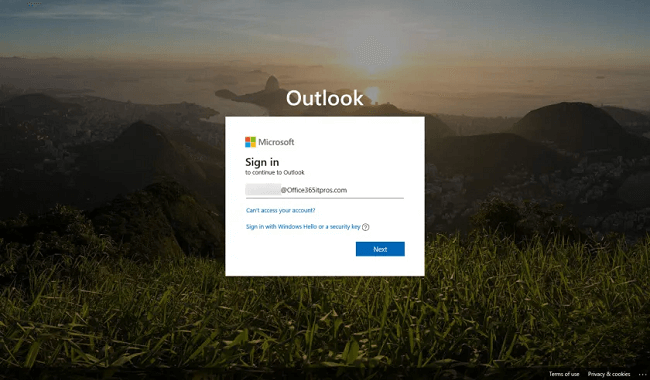Connect-Azuread Download Free Crack For Script Automation
Connecting to Azure Using Powershell The Latest Version 2024
The connect-azuread (Microsoft Entra Connect) is a Microsoft tool that integrates on-premise Active Directory with Microsoft 365 or Azure Active Directory (Microsoft Entra ID). Azure AD Connect is designed to meet hybrid identity goals. You can use Azure AD Connect to synchronize your Active Directory objects with Azure Active Directory.
Connect-Azure AD security is one of our favorite topics because many of the attacks that the Varonis Incident Response Team investigates involve AD at some point in the cyber kill chain. Additionally, this could be a simple brute-force attack to crack an old NTLM password or a privilege escalation attempt to take over an administrator account.
Furthermore, Azure AD Connect creates a Hybrid Identity Solution between the On-Premises Active Directory and the Azure Active Directory. AAD connect configures Azure so that users with local D can access Azure resources. However, AAD Connect helps with synchronization, which creates directory objects such as users, devices, and groups existing in your on-premises AD to the cloud.

Overview:
Allows administrators to manage user accounts, groups, and access rules centrally. Azure AD can be used to authenticate users and groups and grant them access to various applications and resources, both on-premises and in the cloud. The broader Azure platform, which is Microsoft’s cloud computing infrastructure, includes Azure AD. Microsoft offers Azure in three versions: Free, Basic, and Premium.
Depending on the organization’s needs and requirements, each version offers a variety of features and functions. Azure AD Connect lets you connect your on-premises identity infrastructure to Azure Active Directory (Azure AD). It will enable you to manage identities across a hybrid infrastructure consisting of public cloud and on-premises resources.
Screenshots:


Key Properties:
Azure AD offers a wide range of features and functionality to help organizations manage their identity and access requirements. Some of the key features of Azure AD are as follows:
Single sign-on (SSO):
Azure AD provides users with a single sign-on option that allows them to sign in once and access multiple applications and services without having to re-enter their credentials.
Multi-Factor Authentication (MFA):
In addition, Azure AD supports MFA, which provides an additional layer of security by requiring users to provide two or more authentication factors before accessing resources.
Application proxy:
Azure AD securely publishes on-premises web applications to the Internet without making any application changes.
Conditional access:
Moreover, Azure AD supports conditional access policies that allow administrators to control access to resources based on specific conditions.
Specific conditions, such as user location or device compliance,
Group-based access management:
Azure AD allows administrators to assign group-based access permissions, making it easier to manage access to resources at scale.
Connect-azure ad:
In addition to this, Azure AD Connect is a tool that allows organizations to synchronize their on-premises directories with Azure AD. It provides seamless identity management for both on-premises and cloud resources.
How to use connect-azuread?
The following are the procedures to install Connect Azure:
- You install the application on a domain-joined server in your local data center.
- The default installation option is Express Settings.
- Moreover, the express setting is used for the most common scenario: synchronizing data between a single on-premises forest.
- That has one or more domains and a single Azure AD tenant.
- If you have multiple forests or multiple Azure AD tenants, check out the other topologies that Microsoft supports.
- By default, synchronization is one way: from on-premises AD to Azure AD.
- However, you can configure the write-back feature to sync changes from Azure AD back to your on-premises AD.
- This way, for example, if a user changes their password using Azure AD’s self-service password management feature,
- Finally, the password will be updated in the local AD.
What’s new in Connect Azure?
Enhanced security:
Azure AD provides a centralized and secure identity and access management solution that reduces the risk of security breaches and unauthorized access to resources.
Increased productivity:
Connect Azure AD enables users to access multiple applications and services using a single set of credentials, reducing the time and effort required to manage multiple accounts.
Simplified management:
Additionally, connect-azuread provides a centralized management console for managing user accounts, groups, and access policies, making it easier for administrators to manage identity and access requirements.
Scalability:
Further on, Azure AD can be scaled to meet the needs of organizations of all sizes, from small businesses to large enterprises.
Integration with other Microsoft services:
Azure AD is integrated with other Microsoft services, such as Office 365 and Azure.
It provides seamless identity management across multiple services.
System Requirements for connect-azuread:
- Windows Server 2012R2
- Outgoing Internet access to port 443
- Fewer than 10,000 objects in AD
- 1.6GHz dual-core processor with 4GB or 70GB
- More than 50,000 objects in AD:
- 1.6GHz dual-core processor with 4GB or 100GB
Conclusion Connect-Azuread:
Windows Active Directory (AD) is the predecessor of Microsoft’s Azure AD. Microsoft released Active Directory on Windows 2000 Server and it became the standard for corporate identity management. Furthermore, Active Directory lives locally on servers called Domain Controllers (DCs). Each DC contains a catalog of users and computers. DC is authorized to access resources on the network. Users authenticate with domain controllers through Kerberos or NTLM authentication.
At last, connect-azure serves as a critical link between on-premises AD and Azure AD environments. And access control across hybrid infrastructures. By synchronizing user identities, streamlining authentication processes, and providing a unified view of identities, Azure AD Connect enables organizations to leverage the full potential of cloud services. While maintaining a secure and efficient user experience.
